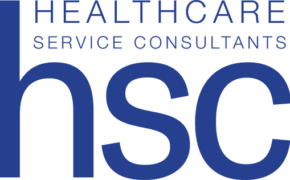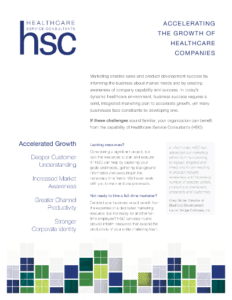Thought leadership is a common content marketing strategy. It leverages the talent, experience, and knowledge within a business to answer your target market’s most pressing questions.
Thought leadership content works to progress the buyer’s journey. It helps prospects develop an understanding and awareness of the problem they are experiencing. But, thought leadership content can also impact other aspects of marketing, such as:
- creating brand awareness and positioning
- competitive differentiation
- elevating the stature of company leadership
Thought leadership is beneficial to all B2B companies’ sales process. Yet, healthcare IT has unique challenges to which thought leadership content is particularly well suited.
1) We sell to a highly-educated and multidisciplinary audience that values educational information.
Radiologists and radiology administrators have advanced degrees in their fields. They don’t want feel-good buzzwords or a sales pitch. They want data and insights. Additionally, large healthcare IT purchases involve cross-functional teams. These teams represent clinical and technical disciplines with many perspectives, goals, and concerns.
Your thought leadership content must speak to the challenges and needs of these varying groups. It should include the perspectives of healthcare providers who have some exposure to and experience with these challenges.
2) We sell into a market that cannot afford to buy unproven ideas.
Healthcare is a risk-averse industry. Clinicians and administrators can’t afford to make mistakes that jeopardize clinical care. There are lives and livelihoods at stake. Healthcare margins are very thin, and many hospitals are not-for-profit. Thought leadership content must present proof of clinical, operational, or financial benefits. And, it must do so in a manner that shows the company’s solution is low-risk and proven.
3) Your competition is providing it, so you don’t want to get left behind.
Development of thought-leading, educational content is very common among clinical test, medical device, and clinical imaging systems developers. This extends to healthcare IT technologies that:
- manipulate clinical information
- incorporate AI or machine learning related algorithms
- capture and analyze clinical data
“Everyone else is doing it,” isn’t a great reason to do something. But, it is important to stay ahead of your competition. Prospects are hungry for information that helps them understand and solve their problems. You want them to get sound and trusted answers from you, not your competitors.
4) Thought leadership provides a foundation for an effective in-bound marketing effort.
Thought leadership in marketing needs to balance talent and expertise with authenticity. Thought leadership content must be high-quality and helpful, not a thinly-veiled sales pitch. It must share meaningful insights that reflect:
- an understanding of the challenges at hand
- its impact on healthcare
- opportunities to solve the problem
You can promote thought leadership content via digital channels. For example, driving downloads behind gated forms. You can then provide targeted content to these in-bound leads.
Different Types of Thought Leadership Content
Some types of thought leadership content are particularly effective in healthcare IT space:
White papers and eBooks
The healthcare IT audience is highly-educated. They are less averse to reading written content than the general population.
Infographics
At the same time, healthcare professionals are very busy. Visual representations such as infographics can present valuable content in an easy-to-digest manner.
Speaking Engagements
Healthcare professionals pursue continuing education throughout their careers. Your company can give keynote addresses or lead workshops at conferences and symposia.
Educational Webinars
Like live speaking engagements, webinars are a great opportunity to build trust. You have a platform to answer questions and share expertise. These events have an added advantage of being able to reach a large audience. Geographic proximity and scheduling need not be limiting factors.
Your audience has questions. Not so much about your specific product, but about the needs your solution fulfills. Thought leadership is a great way for healthcare IT companies to answer those questions. In doing so, you will guide prospects along the buyer journey, build brand awareness, and stand out from the competition.




